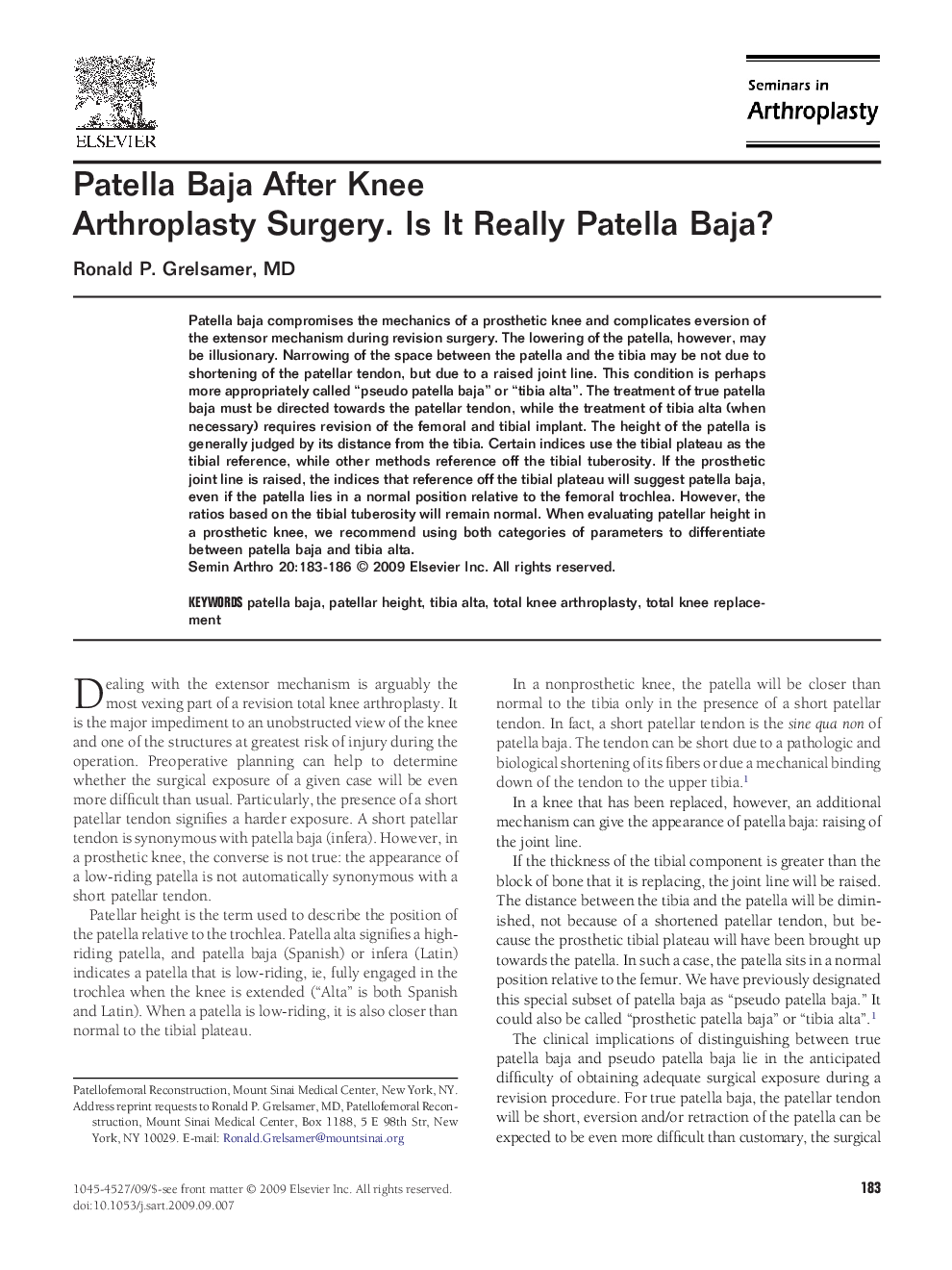| Article ID | Journal | Published Year | Pages | File Type |
|---|---|---|---|---|
| 4094221 | Seminars in Arthroplasty | 2009 | 4 Pages |
Patella baja compromises the mechanics of a prosthetic knee and complicates eversion of the extensor mechanism during revision surgery. The lowering of the patella, however, may be illusionary. Narrowing of the space between the patella and the tibia may be not due to shortening of the patellar tendon, but due to a raised joint line. This condition is perhaps more appropriately called “pseudo patella baja” or “tibia alta”. The treatment of true patella baja must be directed towards the patellar tendon, while the treatment of tibia alta (when necessary) requires revision of the femoral and tibial implant. The height of the patella is generally judged by its distance from the tibia. Certain indices use the tibial plateau as the tibial reference, while other methods reference off the tibial tuberosity. If the prosthetic joint line is raised, the indices that reference off the tibial plateau will suggest patella baja, even if the patella lies in a normal position relative to the femoral trochlea. However, the ratios based on the tibial tuberosity will remain normal. When evaluating patellar height in a prosthetic knee, we recommend using both categories of parameters to differentiate between patella baja and tibia alta.
